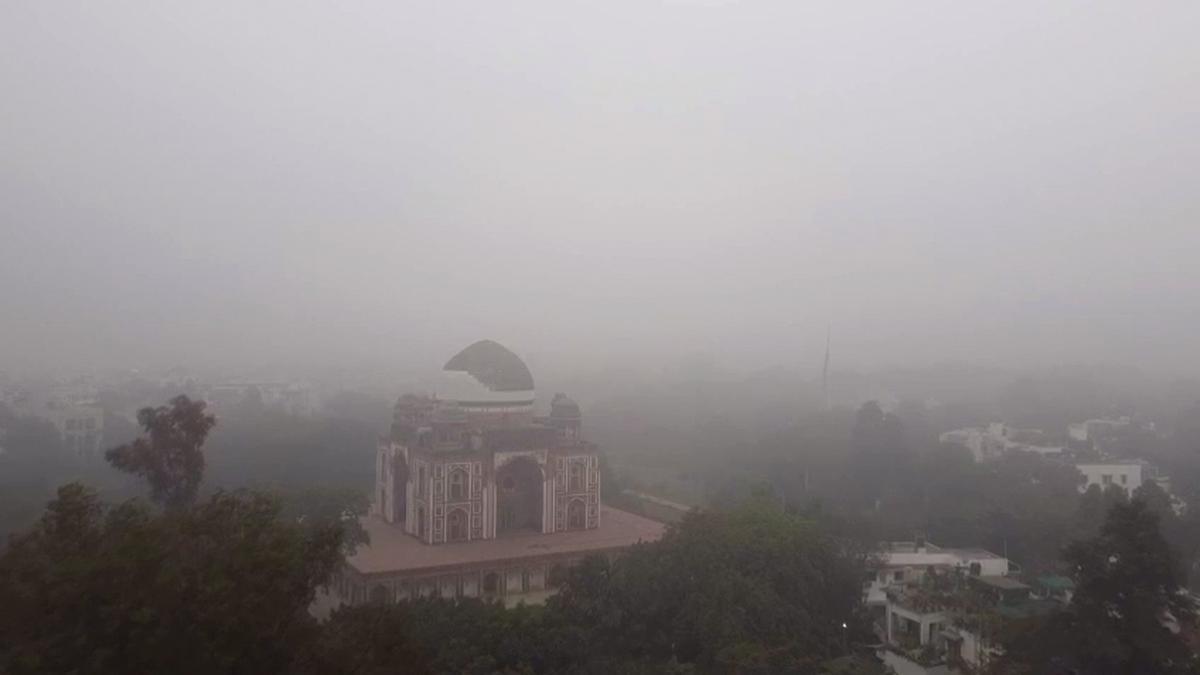A thick layer of fog engulfs Nizamuddin area in New Delhi on a cold winter day, January 3, 2024.
| Photo Credit: ANI
The story so far: As winter tightened its grip on northern India, a thick blanket of fog descended on several states in the last days of 2023 and first of 2024, creating challenging conditions for residents and travellers alike. Some places in the country’s north reported low temperatures and dense fog for the last week of December. According to weather reports in late December 2023, minimum temperatures in Punjab, Haryana, and the northern reaches of Rajasthan and Uttar Pradesh hovered around 6-9 degrees C. In New Delhi, south Rajasthan, and north Madhya Pradesh, some places recorded minimum temperatures in the range of 10-12 degrees C, according to the India Meteorological Department (IMD).
In the same time, most of North India also experienced a dense fog that reduced visibility in many areas to as little as 50 metres for several days. Haryana, including Chandigarh, plus isolated pockets of Uttarakhand, Uttar Pradesh, Bihar, Rajasthan, and Madhya Pradesh reported fog with visibility reduced to under 200 metres.
Other states including Jammu & Kashmir, Himachal Pradesh, Odisha, Chhattisgarh, Jharkhand, and Uttarakhand also reported fog for a few hours in the morning, the IMD reported.
What effects did the fog have?
The fog’s principal effect was on air travel: nearly 450 flights were delayed or cancelled on December 27 at Delhi’s Indira Gandhi International Airport as a dense layer of fog enveloped the city. On December 29 and 30, almost a hundred and then 80 flights, respectively, were delayed from Delhi.
The arrival and departure of several Delhi-bound trains were also delayed by poor visibility and dense fog on December 29. The Hindu reported on December 29 that at least eight trains that were supposed to have reached the national capital the previous night didn’t while a few trains scheduled to reach on the morning of December 29 had been delayed by a few hours.
Auto-rickshaw and taxi drivers within the city also reported struggling with low visibility as foggy conditions made it difficult to drive on roads.
What is fog?
The fog that disrupted the lives of people in North India is a common weather phenomenon. A fog is a collection of small droplets of water produced when evaporated water has cooled down and condensed.
According to Madhavan Nair Rajeevan, former director of the IMD and current Vice-Chancellor of Atria University, “Fog is nothing but a thick cloud, but very close to the earth’s surface. For a thick fog to form, temperatures should be lower and abundant moisture should be available near the surface.”
Fog materialises whenever there is a temperature disparity between the ground and the air. This happens frequently during Indian winters: the fog is created when the temperature drops at night and in the early morning, condenses on aerosols present in the atmosphere.
High humidity, combined with an ample presence of water vapour or moisture, encourages foggy conditions.
The process by which it cools plays a pivotal role in the formation of fog.
One primary mechanism contributing to fog formation is called infrared cooling. It typically occurs when the weather is transitioning from summer to winter. In the summer, the ground absorbs radiation from the Sun, becomes warmer, and moistens the air passing over it.
When cooler weather kicks in, this mass of warm, moist air comes in contact with processes that cool it. The ‘collision’ prompts the water vapour in the air to condense rapidly, giving rise to fog.
Another type of fog, known as radiation fog, is prevalent and occurs when an unseasonably warm day with high humidity is followed by rapidly dropping temperatures.
The specific type of fog, its duration, and its effects are contingent on various environmental conditions. (For example, there exists a unique type of fog that encourages snow to melt faster.)
Why is northern India prone to fogging?
“The entire Indo-Gangetic plains are prone to formation of fog during winter season, as all the conditions — low temperatures, low wind speed, moisture availability and plenty of aerosols — are present in this region,” Dr. Rajeevan wrote in an email to The Hindu.
“Moisture incursion into this region can happen once a Western Disturbance — a precipational pattern that brings rain to north India during winter months — moves across northern parts.
“Sometimes, moisture incursion can happen from the Arabian Sea also.”






